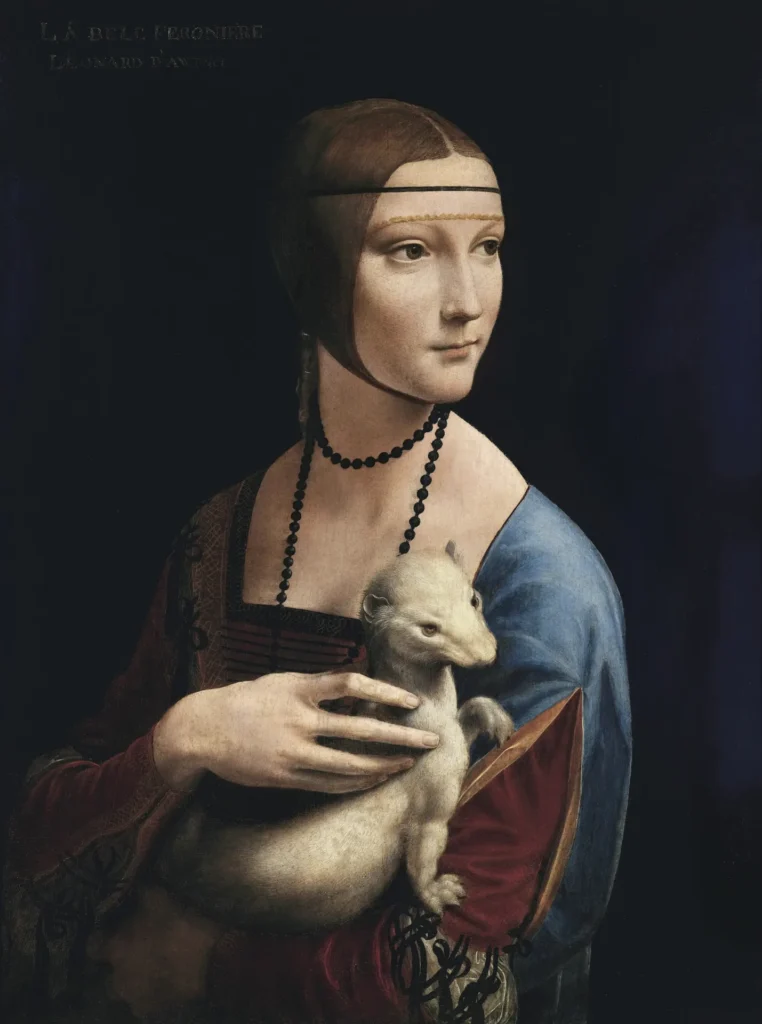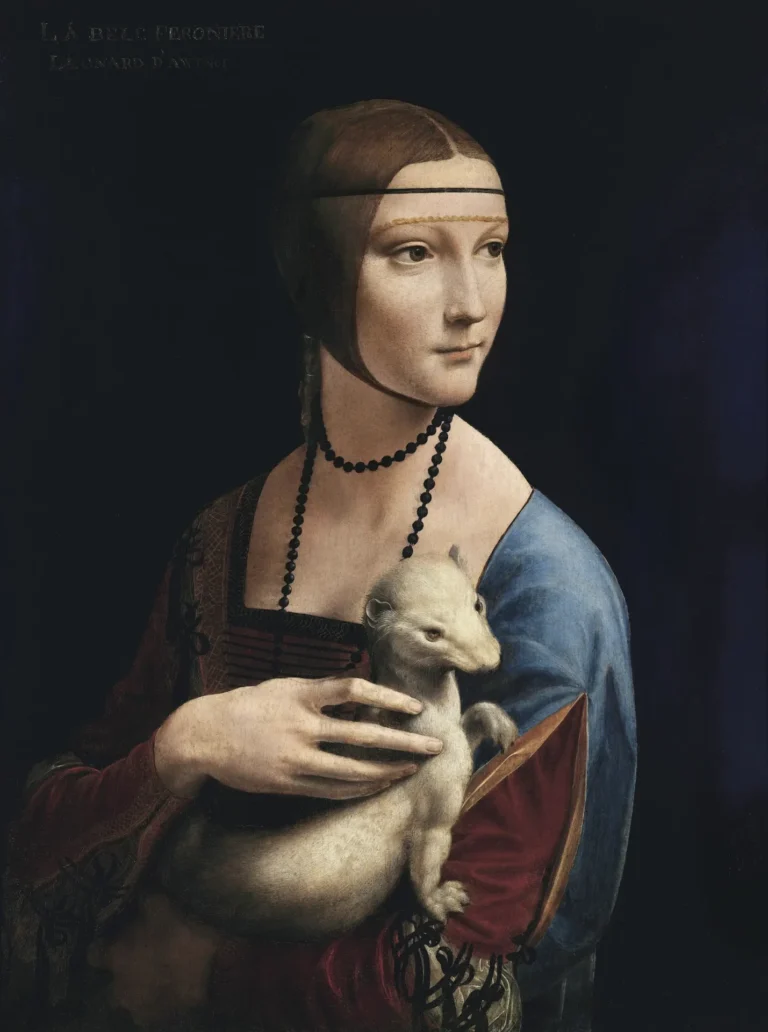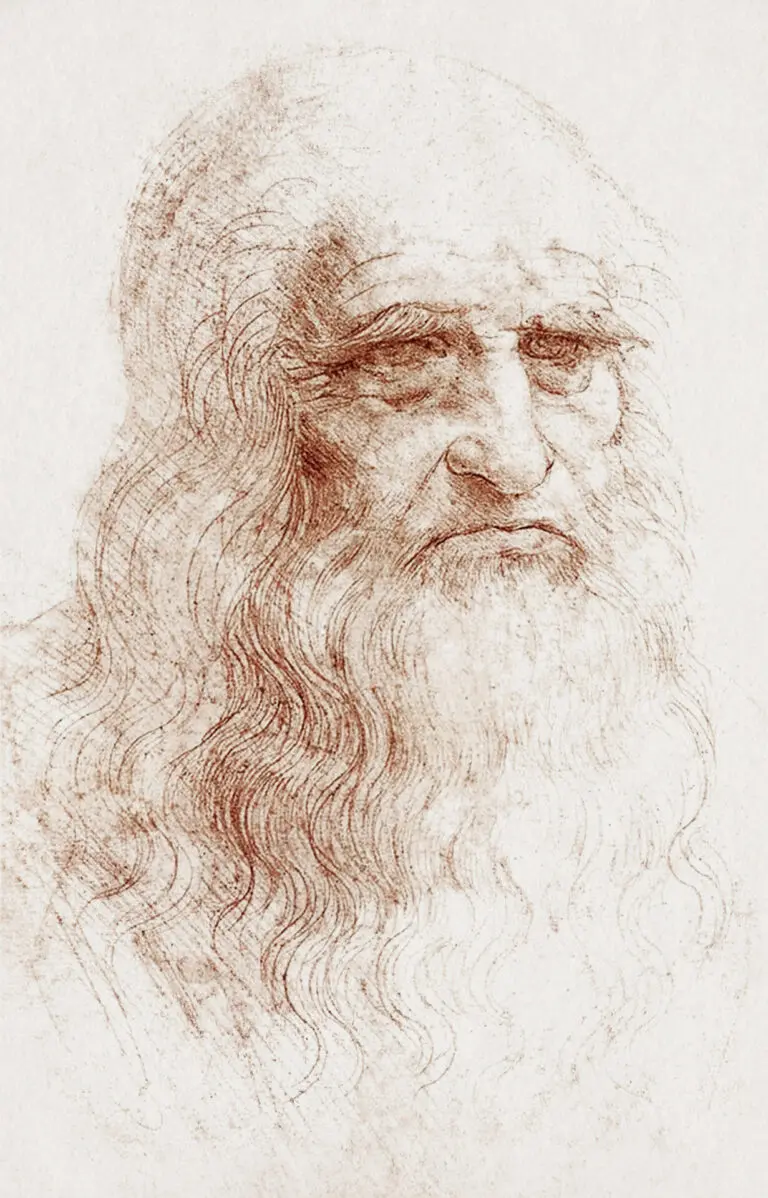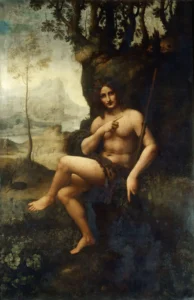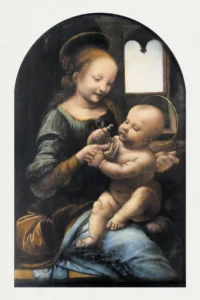Lady with an Ermine (1490)
Created by the genius of the Renaissance, Leonardo da Vinci, the Lady with an Ermine showcases Cecilia Gallerani, the young mistress of Duke Ludovico Sforza of Milan. This oil painting on walnut wood, measuring 54 cm x 39 cm, is a brilliant example of da Vinci’s innovative techniques and intricate symbolic details. The ermine, a heraldic symbol for the Duke, highlights the intertwining of personal and political narratives, while the unique pose of Cecilia adds a dynamic quality to traditional portraiture.
1489 - 1491
About the Artwork
Lady with an Ermine is not just a portrait but a narrative interwoven with the complexities of love, politics, and art. Cecilia Gallerani, portrayed in a moment that captures her grace and intellect, was at the center of a societal power play during the late 15th century. Ludovico Sforza, her lover, commissioned this artwork during a period when Da Vinci was at the height of his artistry. The painting's various layers of meaning, from Cecilia’s relationship with the Duke to her impending marriage, encapsulate the dynamics of the Renaissance court. The ermine she holds symbolizes purity and is connected to her own identity, echoing themes of fidelity and power dynamics during this time.
Did You Know
Liked what you see? Add it to your collection.
Enjoyed reading? Share it.
... continued
Subject and Context
The painting depicts Cecilia Gallerani, who was the teenage mistress of Ludovico Sforza, the Duke of Milan. At the time, Leonardo da Vinci was in the service of the Duke.
Composition and Technique
The painting is an oil on a walnut wood panel, measuring 54 cm x 39 cm. It showcases Da Vinci's mastery in portraiture and his use of symbolism. The woman is captured mid-movement, interacting with an ermine, which was a symbol associated with Duke Sforza, known as "the White Ermine".
Symbolism of the Ermine
The ermine holds significant symbolic meaning. It was the Duke's heraldic animal and also relates to Cecilia's surname, Gallerani, through the ancient Greek word for weasel, "galê" or "galéē". The ermine is also associated with purity, moderation, and chastity, reflecting both Cecilia's connection to the Duke and her upcoming marriage to Count Lodovico Bergamino.
Artistic Innovations
The painting stands out for its unconventional pose, deviating from traditional Renaissance portraits. Da Vinci's attention to anatomical realism and his use of geometric constructions to draw the viewer's attention are notable. However, the painting also contains intentional subtle errors and aesthetic conspicuities, such as the oversized ermine and the disproportionate size of Cecilia's hands, which add to the interpretive depth of the work.
Condition and Restoration
The original background of the painting has been altered; it was overlaid with a dark black color, likely in the 17th century. Other parts of the painting, such as Cecilia's dress and the transparent veil, have also been retouched. X-ray analysis has revealed the original background included a door, and the painting has undergone several restorations, including examinations in Warsaw and Washington.
Provenance
The painting is now housed at the Czartoryski Museum in Krakow, Poland. It was acquired by Prince Adam Czartoryski in 1800 and has had a tumultuous history, including being hidden during wartime and suffering damage, such as an SS soldier's footprint during World War II.
Attribution and Dating
The attribution of the painting to Leonardo da Vinci was widely accepted in the 20th century due to its style, use of chiaroscuro, and intricate detail. It is securely dated to Leonardo's first Milanese period, between 1489 and 1491.




